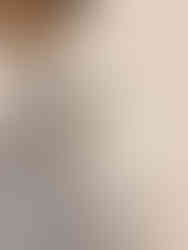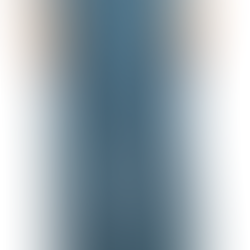Fitting the Avid Seamstress Blouse
- MingMakes

- Apr 27, 2024
- 7 min read
Updated: May 25, 2024
I have had my eye on The Blouse pattern by The Avid Seamstress for a while and decided to join the Creative Spirit Retreat to sew it up, hosted by founder Lisa Falconer. It was such a wonderful experience, and I will share more in my review of the pattern itself. Prior to the retreat, I made a toile so that I could just concentrate on the sewing whilst there. I detail my fitting journey below and was really pleased with the result.

My review of the pattern itself can be found here.
Sample toile
Going by the size chart, I was closest to size 2. Lisa offered to send a sample she had in this size so I could try it before making a toile. This was really useful as a starting point, meaning one less toile. It had one sleeve with the elasticated cuff and one without so I could see which I preferred.
Observations
Tightness across my shoulders and upper bust.
Tightness around my neck
Folds coming from my upper back
1 and 2 - Tightness across shoulders, upper bust and neck
I showed my photos to Lisa and we agreed it would be best to try sizing up which would address these two points.
3. Draglines coming from my upper back
As is common with me, it looked like I might benefit from an upper rounded back adjustment going by the draglines coming from my upper back, and so I applied this to the size 3 before cutting my toile.
Upper rounded back adjustment (RBA)
I did an upper RBA for 1.5 cm using the technique here by Sew Sew Live from timestamp 4:26.
Here is how I did it. The photo below shows the original back pattern piece with the 1cm seam allowance on the shoulder drawn on.

I cut across the lines leaving a hinge on the shoulder seam, spreading apart by 1.5cm at the centre back, generally recommended as the maximum here, with any additional adjustment being done as a lower rounded back adjustment. The green lines on the shoulder seam indicate the seam line and 1cm above this.

To check the length of the shoulder seam hadn't changed too much, I folded under the seam allowance of the corresponding shoulder seam on the front piece.

I then butted this up against the shoulder seam on the back piece and could see they were the same length.

I continued to cut out the back piece, ensuring a right angle at the centre back and neckline. Here is the finished piece.

I then used this to make my first toile.
First toile
I cut just the bodice to better assess the fit before adding sleeves.
Observations
Compared to the sample toile:
I no longer had tightness across my shoulders and upper bust, although this still needed to be checked with the sleeves sewn on
I no longer had tightness around my neck
I still had folds coming from my upper back
I had some front armhole gaping, more so on my right side
Here's what I did for points 3 and 4.
Draglines from upper back
These were pointing from my upper back, and so it seemed I needed a lower RBA in addition to the upper RBA already done. I slashed horizontally across this area and pinned in some additional fabric to mimic a lower RBA of 1.5cm. This looked much better when comparing the two.
The back piece is cut on the fold and so I didn't want to add a centre back seam, or have a neck or shoulder dart. Having come across this issue before when fitting my Freya knit dress, I tried this technique which theoretically should also work with a woven.
Lower rounded back adjustment
I first added a simple lower RBA by slashing horizontally across from centre back and creating a hinge at the armhole seam allowance. I spread this by 1.5cm at centre back.

I then drew the new shape around the neck, shoulder and armhole in pencil as indicated by the black arrows, using the technique linked to above.

I then cut the back fold straight from the neckline to the hem. The dotted line in the photo below indicates what was cut off. You can see that the amount cut off is more than that gained at the armhole and therefore the width of the back was slightly reduced. However I could see that I had excess width in the back with plenty of ease so this wouldn't be an issue.

Here is the final piece.

Front armhole gaping
This indicated I needed more room for my bust. I have had to do full bust adjustments before which has always confused me since I wear cup size A in RTW clothing. I wonder whether I have more of my circumference at the front than the back, as I find I am sometimes tight in the front and loose at the back when the bust measurement is correct. In fact I often size up as my upper bust is larger than my full bust measurement.
Full bust adjustment
I used this resource from Helen's Closet to do a simple FBA just to give me an extra 1cm width on the pattern piece.

Second toile
Observations
Compared to my first toile:
I still had folds coming from my upper back but they were better.
I had some front armhole gaping but it was better. I think I either need a larger adjustment or may benefit from a more traditional FBA. I have saved this link from Helen's Closet for a FBA without darts for future reference.
The side seams were tipped forward (more obvious on my left side), which may be helped by a more traditional FBA which would add some length to the front.
I had a tiny bit of back armhole gaping which I didn't notice so much on my first toile. I wonder whether I need even more room for my rounded back, or perhaps an adjustment dealing more with the prominences on either side where the folds originate, more akin to a FBA.
Here is the comparison of the back views on my first and second toile.
I was tempted to leave it as is here, but this is often where I stop out of frustration and wanted to see if I could improve the fit further. After a couple more adjustments, my third toile was worse and so I reverted back to this version. If you wish to skip ahead to that point, you can click here.
The changes I made to this second toile were:
Increased the FBA by 1.5cm to make a total of 2.5cm, using the same technique as above.
After a bit of research, I decided to try this technique by Alexandra Morgan to create more length for the upper back. I haven't tried this before and wasn't sure how the shoulder slope would change things, so I just did this for 1cm on top of the RBAs already done. The relevant adjustment is at timestamp 5:00, the first method of three that Alexandra explains.
Third toile
Observations
Compared to my second toile:
I had horizontal draglines at the upper back, indicating the shoulder slope was too steep
There was no longer gaping at the front armhole.
There was some gaping at the back armhole on my left side.
The side seams were tipped more forward at the hem and the front hem was raised.
I felt that the adjustments had made the fit worse and so I reverted back to my second toile to continue.
Second toile with sleeves
I added the sleeves at this point, as time was running out before the workshop and I had at least improved the fit.
Observations
The fit around the back was pretty good, perhaps a little excess width in the mid-back area at the lower end of the armholes.
There was tightness around the ball of my shoulder, with draglines radiating out from it.
It felt like there wasn't enough height in the sleeve cap and so I unpicked it here to see the effect.
The draglines disappeared and the rest of the sleeve looked more relaxed.
After consulting my The Palmer Pletsch Complete Guide to Fitting book, I decided to create more width here. I started by tracing the sleeve cap so I could replicate the shape, as widening the sleeve also shortens it which was the opposite of what I wanted.
I then cut a cross-shaped section with hinges at the seams and pulled on the width to add an additional 2cm across the width in the centre of the sleeve.

I lay this piece back over the original traced sleeve cap and added this to the sleeve piece.

This meant the length of the sleeve cap was now longer but I hoped I could still just about ease it in. Although I transferred the notches, I only kept to the central one at the top when sewing it, as the length and shape of the sleeve cap had now changed and I wasn't sure what this would mean for the notches. I concentrated more of the gathering around the cap and this seemed to be OK.
Second toile with second sleeves
This looked better but still with some tightness around the ball of the shoulder:
At this point, time had run out so I brought this toile with me to the sewing retreat. Lisa suggested that just adding an extra 0.5 cm to the length of the shoulder seam might be enough, rather than adjusting the sleeve any further. This did the trick as the finished blouse fit much better.
The only adjustment I did after that was to shorten the pattern by 10cm, knowing I was going to wear it tucked in most of the time. There was a decent amount of ease around the hips and so I simply took this off the hem. Having now worn the blouse, I think I may just add a few cm back again to allow for a more blouson effect.
Another adjustment I might consider on my next one would be to rotate the sleeve so the head was more towards the back. There is a diagonal fold along the front of the arm that can be seen in the side views which may be helped by this. I'd also consider looking at the FBA to see if that would level the front hem.
My full review of the pattern itself can be found here.
Find me on Instagram, Facebook, YouTube, Bloglovin' or scroll to the bottom to subscribe to my monthly newsletter.
Links
I have no affiliations, I'm just a keen buyer and user. A UK supplier may be linked, please try to source items from your favourite independent stores.
Related blog posts

































































































































I really enjoy these kind of post they have so much different kinds of information and tips! Unfortunately you do not find a lot of blogs with this detailed reports. Thanks for writing it, it was a very pleasant read for me.
Regards, Tina
Really helpful tutorial. Can I ask where you get the polka dotted tape?🤭